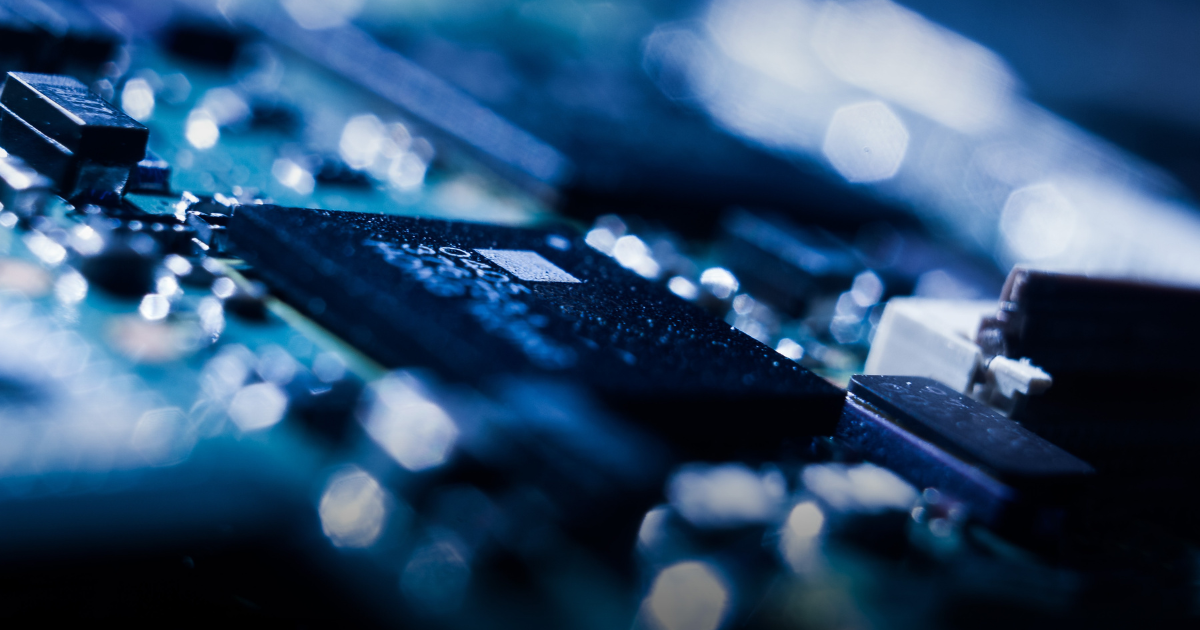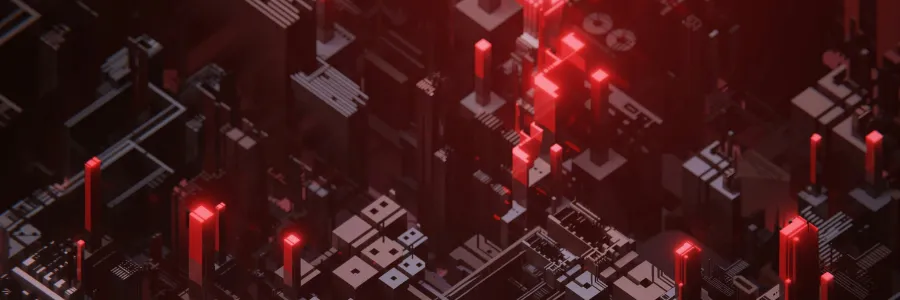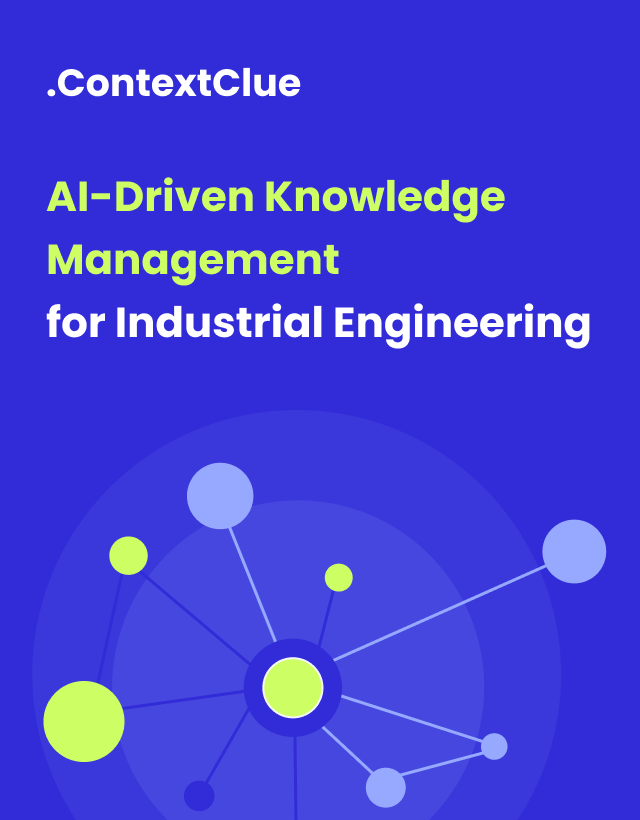
November 03, 2025
Smarter Quality Control: How Self-Supervised Vision AI Improves Defect Detection
Author:

CSO & Co-Founder
Reading time:
8 minutes
Traditional inspection systems hit a fundamental wall: they need massive amounts of labeled data, struggle with real-world variability, and become prohibitively expensive to scale. Miss a defect, and you risk costly recalls or damaged brand reputation. Over-inspect, and you slow down production.
Self-supervised vision AI is changing the equation. Unlike conventional systems that require painstaking human annotation of every defect type, these models learn directly from raw production data, teaching themselves to recognize what “normal” looks like and flagging anything that deviates. The results are striking: early adopters are seeing defect rates drop by up to 60%, while simultaneously reducing the time and cost of quality assurance.
This isn’t just an incremental improvement. It’s a fundamental shift in how manufacturers can approach quality control – one that promises smarter, faster, and continuously learning systems that get better with every production run.
In this article, we’ll explore how self-supervised vision AI works, examine the strategic benefits it delivers to manufacturing operations, and provide a practical implementation roadmap for decision-makers.
You’ll discover why this technology is no longer limited to enterprise giants, how to pilot it effectively in high-impact areas, and what executive leaders need to know to scale AI-driven quality inspection across their organizations, turning inspection from a cost center into a competitive advantage.
Why Traditional Quality Control Keeps Failing
Maintaining high-quality standards is fundamental to manufacturing competitiveness, yet achieving consistency at scale remains a formidable challenge. The costs of failure are severe: quality lapses – from minor surface flaws to critical structural defects – lead to rework, scrap, and warranty claims, while also undermining customer trust, weakening brand equity, and threatening long-term profitability.
Traditional inspection methods have struggled to solve this problem. Manual quality control relies heavily on human expertise and repetitive visual checks, which are both costly and labor-intensive.
More critically, it introduces variability through operator fatigue, subjective judgment, and environmental conditions, leading to inconsistent results and delayed defect detection. Early automation promised relief, but legacy AI inspection systems simply traded one set of problems for another.
These systems required thousands of accurately labeled defect images to perform reliably, demanding extensive data preparation and continuous retraining with every product change. This dependence on labeled data limited adaptability, increased implementation costs, and made it nearly impossible to respond quickly to production variations.
The result is a quality control dilemma: manufacturers are caught between expensive, inconsistent manual inspection and inflexible, data-hungry AI systems, neither of which can deliver the consistency, speed, and adaptability that modern production demands.
How Self-Supervised AI Changes the Game
Self-supervised vision AI represents a fundamental shift in quality assurance, offering a scalable, data-efficient alternative to traditional inspection systems.
Unlike supervised models that depend on large, annotated datasets, self-supervised systems learn directly from unlabeled production images, autonomously constructing a representation of what constitutes a “normal” product.
Once trained, these models identify anomalies as deviations from this learned baseline, enabling highly sensitive and adaptive defect detection without human intervention. This approach shortens implementation time and significantly reduces the cost and complexity of deployment.
A single self-supervised AI platform can manage multiple inspection tasks across diverse product lines, maintaining high accuracy even under changing lighting conditions, materials, or assembly configurations.
Moreover, edge-native inference allows real-time operation directly on production equipment, eliminating the need for cloud dependency and minimizing downtime.
What You Gain: Four Strategic Advantages
The adoption of AI-driven defect detection delivers a transformative blend of operational efficiency, financial resilience, and long-term strategic value across four critical dimensions:
- Early intervention and risk mitigation By identifying anomalies and inconsistencies early in the production cycle, organizations can intervene before defects escalate, substantially lowering the risk of costly recalls, warranty claims, and brand reputation damage. This proactive quality assurance model converts what was once a reactive process into a predictive and preventative discipline, safeguarding both profit margins and customer trust.
- Workforce elevation and human-machine collaboration AI automation redefines the role of human inspectors. Instead of dedicating time to repetitive, low-value visual checks, employees can redirect their focus toward complex problem-solving, process optimization, and root-cause analysis. This shift elevates workforce engagement, fosters a culture of continuous improvement, and strengthens human–machine collaboration—delivering not a reduction in workforce relevance, but rather a strategic enhancement of human expertise through intelligent automation.
- Data-driven upstream optimization The vast streams of data generated by AI inspection systems offer deep analytical insight into recurring defect patterns, supplier performance, and process variability. These insights enable upstream teams—from design engineering to procurement—to make data-driven decisions that reduce defect probability before production even begins. Over time, such feedback loops evolve into closed-loop quality ecosystems, ensuring that every stage of the product lifecycle benefits from continuous learning and refinement.
- Scalability without proportional cost increases Once deployed, AI-driven inspection systems can expand rapidly across plants, lines, or geographies without corresponding increases in cost or headcount. This makes them particularly effective for organizations pursuing global standardization, digital transformation, and Industry 4.0 objectives.
Not Just for Enterprise Giants Anymore
Self-supervised vision AI has made enterprise-grade quality inspection accessible to mid-sized manufacturers. By learning directly from production imagery – without massive labeled datasets or dedicated data science teams – these systems deploy in weeks, not quarters, and prove ROI rapidly through measurable reductions in defect rates and scrap costs.
Three factors drive this democratization:
- Speed to value. Targeted pilots in high-defect areas demonstrate results within weeks, giving executives confidence to scale from localized tests to enterprise-wide capabilities.
- Continuous adaptation. As production environments evolve—new materials, components, or process variations—the AI refines itself automatically, without manual retraining or reconfiguration.
- Scalable economics. Mid-sized manufacturers can now compete at enterprise scale, enhancing quality performance and operational agility without proportional cost increases.
Your Roadmap: Five Steps to Implementation
Successful deployment of self-supervised vision AI begins with a clear, strategic framework designed to deliver rapid validation, measurable ROI, and long-term scalability.
For decision makers, the goal is not simply to install a new technology but to embed intelligence into the organization’s quality infrastructure—creating a repeatable model that aligns with business objectives, compliance standards, and operational realities.
1. Identify High-Impact Pilot Areas
Begin with a focused pilot in a high-defect, high-cost process zone where product quality states are well-defined (e.g., “good vs. bad,” “in-spec vs. out-of-spec”). These environments provide clean data, fast feedback loops, and clear financial baselines. By concentrating on visible problem areas, executives can generate early results that validate the technology’s effectiveness and justify further investment.
2. Integrate Seamlessly into Existing Systems
For maximum efficiency, connect the AI inspection system directly to the organization’s existing Quality Management System (QMS), Manufacturing Execution System (MES), or other digital production platforms. Modern AI solutions are built with open APIs and modular architecture, ensuring smooth interoperability without major infrastructure changes. This integration allows for centralized monitoring, auditability, and automated data sharing—critical for governance and traceability.
3. Establish Governance and Compliance Frameworks
AI-driven quality inspection must operate under well-defined governance structures. Decision makers should ensure the establishment of clear accountability for model accuracy, bias mitigation, and data security. Incorporating the system within existing quality assurance and compliance frameworks not only reinforces regulatory alignment but also builds organizational trust and transparency in AI-driven decisions.
4. Define Success Metrics and Monitor Impact
To sustain executive confidence and funding, measure progress through quantifiable business metrics, such as:
- Defect rate reduction (%)
- Inspection cost savings (€ / %)
- Decrease in customer complaints or returns
- Faster detection-to-correction cycles
These KPIs link technological adoption directly to financial and operational outcomes, enabling data-driven reporting at the leadership level.
5. Scale Strategically Across Operations
Once the pilot demonstrates success, scale deployment through a structured rollout plan—expanding to adjacent production lines, sites, or geographies. Prioritize areas where similar product types or processes exist to ensure fast replication and consistent performance. This phased expansion approach preserves stability while amplifying enterprise-wide value creation.
In conclusion, an intentional, metrics-driven implementation strategy ensures that AI adoption is not a one-off initiative but a strategic investment in sustainable operational excellence. By combining targeted pilots, seamless integration, disciplined governance, and data-backed decision-making, executives can confidently transition from proof-of-concept to enterprise-wide transformation—turning vision AI into a cornerstone of next-generation manufacturing competitiveness.
FAQ – AI in Quality Control
How complex is integration with existing systems?
Modern AI inspection platforms connect seamlessly with existing MES, QMS, and ERP systems through APIs or middleware. Deployment requires minimal disruption—no infrastructure overhaul needed, allowing you to modernize quality control without operational risk.
What level of data readiness is required?
Minimal. Self-supervised AI learns from raw production imagery without labeled datasets. Pilots can start with images collected within days and improve continuously as more data flows through. No extensive data preparation or manual annotation required.
When can leaders expect to see measurable ROI?
Within three to six months. Organizations report measurable improvements in defect detection, throughput, and rework costs shortly after deployment. Reduced scrap and faster approvals provide immediate validation and a compelling case for scaling.
Can the system scale across plants or geographies?
Yes, rapidly. Once proven in one facility, the system replicates across sites through centralized configuration. It adapts automatically to lighting variations, product types, and process conditions—enabling enterprise-wide standardization without proportional cost or headcount increases.
Category:






